Asian Water Monitor
- March 8, 2024
- 0 comment
The Asian Water Monitor, scientifically known as Varanus salvator, is a remarkable reptile species native to various parts of Asia, including countries like India, Sri Lanka, Thailand, and Indonesia. It’s a creature of awe-inspiring size, often reaching lengths exceeding 6 feet, making it one of the largest lizard species globally. With its muscular build, long tail, and forked tongue used for sensory perception, the Asian Water Monitor presents an iconic image of the reptilian world. Found in a diverse range of habitats such as forests, wetlands, and coastal areas, these monitors are incredibly adaptable, with a notable ability to swim proficiently.
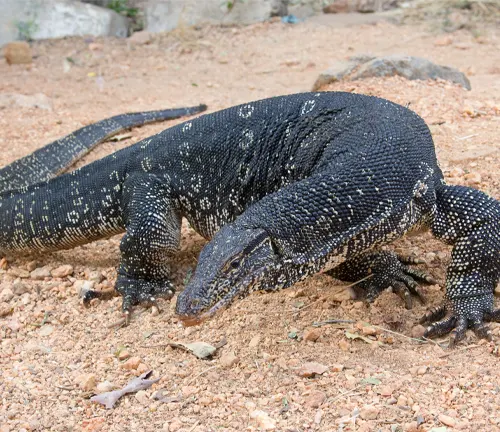
Their diet is equally versatile, as they are opportunistic feeders, preying on anything from fish and birds to small mammals and carrion. Despite their imposing appearance, Asian Water Monitors are generally shy and elusive, preferring to avoid human interaction when possible. However, their habitats are increasingly threatened by factors like habitat destruction, pollution, and illegal trade, putting pressure on their populations. Conservation efforts are vital to safeguard these majestic creatures and ensure their continued presence in the ecosystems they inhabit.
| Attribute | Description |
|---|---|
| Scientific Name | Varanus salvator |
| Common Names | Asian Water Monitor, Water Monitor Lizard |
| Length | Up to 6 feet or more |
| Weight | Can exceed 20 kilograms |
| Body Shape | Muscular and elongated with a long tail |
| Skin Texture | Rough and covered with small, bumpy scales |
| Coloration | Varied, ranging from dark gray to brown with yellow markings along the length of the body |
| Tongue | Forked, used for sensory perception and to detect prey |
| Habitat | Found in tropical and subtropical regions, including forests, wetlands, and coastal areas |
| Distribution | Widely distributed across Asia, including India, Sri Lanka, Thailand, and Indonesia |
| Diet | Opportunistic feeder, preying on fish, birds, small mammals, and carrion |
| Swimming Ability | Excellent swimmers, often found near water bodies like rivers, lakes, and mangroves |
| Behavior | Generally shy and elusive, but may exhibit defensive behavior if provoked |
| Conservation Status | Varies across its range, with some populations stable but others threatened by habitat loss |
| Threats | Habitat destruction, pollution, illegal trade, and conflicts with humans |
| Conservation Efforts | Include habitat restoration, law enforcement against illegal trade, and community education |
| Cultural Significance | Holds symbolic and cultural significance in many Asian cultures, associated with folklore |
| Captivity | Occasionally kept as exotic pets, requires specialized care and large enclosures |
Physical Characteristics of the Asian Water Monitor
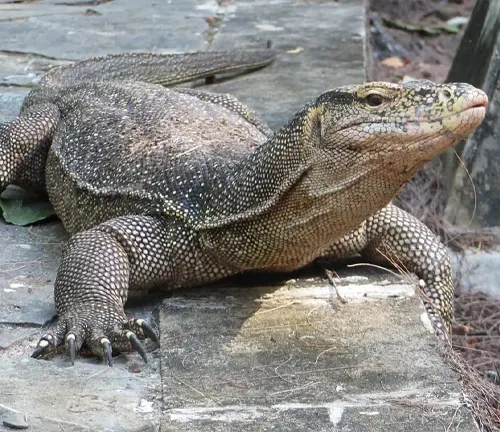

The Asian Water Monitor, possesses several distinctive physical characteristics that contribute to its impressive appearance and adaptability. These features are essential for its survival in its natural habitat and distinguish it from other lizard species.
Firstly, the Asian Water Monitor is known for its large size, often reaching lengths exceeding 6 feet, with some individuals growing even larger. This considerable size makes it one of the largest lizard species globally, adding to its imposing presence in its environment.
Its body is characterized by a muscular build, which contributes to its strength and agility. This muscularity allows the Asian Water Monitor to move efficiently both on land and in water, where it is often found swimming skillfully in rivers, lakes, and mangroves.
The lizard’s long tail serves multiple purposes. It acts as a counterbalance while swimming and helps with agility and stability on land. Additionally, the tail can be used as a weapon for self-defense against predators or threats.
The skin of the Asian Water Monitor is covered in rough, bumpy scales, providing protection from external elements and potential predators. These scales also help reduce water resistance while swimming, allowing the lizard to move swiftly through aquatic environments.
Habitat and Distribution
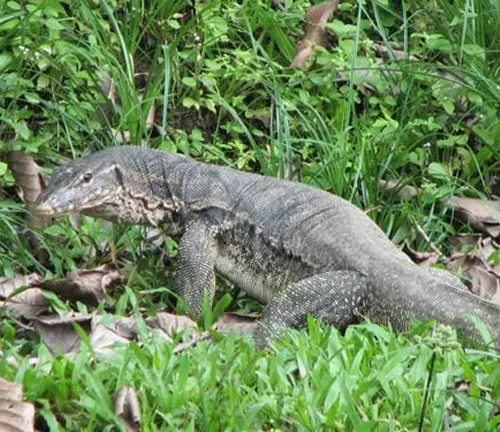
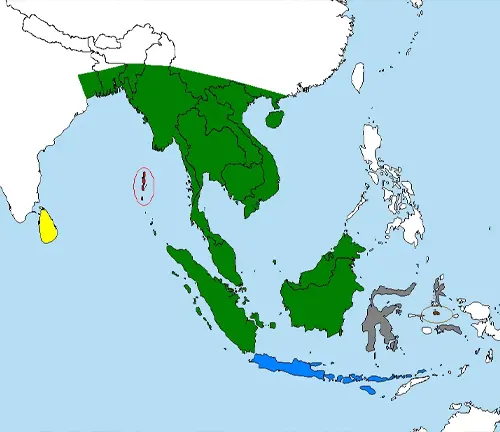
The Asian Water Monitor, occupies a diverse range of habitats across its extensive distribution throughout Asia. These habitats include tropical and subtropical regions, encompassing a variety of ecosystems such as forests, wetlands, and coastal areas.
In terms of distribution, the Asian Water Monitor can be found across a wide geographical range, spanning countries like India, Sri Lanka, Bangladesh, Thailand, Indonesia, and parts of the Philippines. Within these countries, they inhabit various types of habitats, adapting to local environmental conditions.
Asian Water Monitors are often encountered near water bodies, including rivers, lakes, ponds, and mangroves, where they demonstrate their remarkable swimming abilities. These water sources provide them with access to prey and serve as vital components of their habitat.
In forested areas, Asian Water Monitors may utilize trees and dense vegetation for shelter and hunting opportunities. They are also known to inhabit agricultural areas and human settlements, where they may scavenge for food and take advantage of human-made structures for shelter.
Behavior and Diet

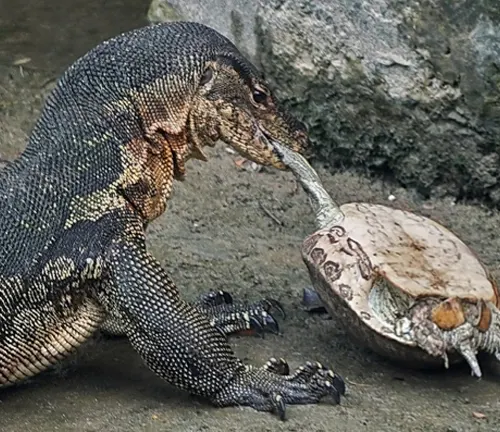
The behavior and diet of the Asian Water Monitor, are fascinating aspects of its biology that contribute to its survival and ecological role. These monitors are known for their adaptability and opportunistic feeding habits.
In terms of behavior, Asian Water Monitors are primarily solitary animals, although they may occasionally be encountered in pairs or small groups. They are generally shy and elusive, preferring to avoid human interaction whenever possible. When threatened, they may exhibit defensive behavior, using their powerful tails and sharp claws for protection.
One of the most remarkable aspects of the Asian Water Monitor’s behavior is its proficiency in swimming. These lizards are excellent swimmers and are often found near water bodies such as rivers, lakes, and mangroves, where they hunt for prey and seek refuge from predators.
Asian Water Monitors are opportunistic feeders, meaning they consume a wide variety of prey items. Their diet includes fish, amphibians, reptiles, birds, small mammals, crustaceans, and even carrion. They are known to ambush prey from the water’s edge or hunt actively both on land and in the water.
Reproduction and Life Cycle

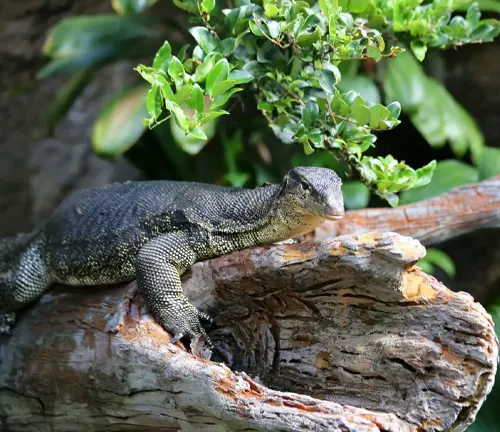
The reproduction and life cycle of the Asian Water Monitor, are intriguing aspects of its biology that play a crucial role in ensuring the continuity of its species. These monitors reproduce sexually and undergo a series of developmental stages from egg to adulthood.
In terms of reproduction, Asian Water Monitors typically mate during the dry season, with females laying their eggs in nests dug into the ground. The nesting sites are often located in sandy or soft soil near water bodies, providing a suitable environment for egg incubation.
After mating, females deposit clutches of eggs, which can vary in size and number depending on factors such as the female’s age and size. The eggs are then carefully buried by the female to protect them from predators and environmental fluctuations.
The incubation period for Asian Water Monitor eggs lasts several weeks, during which time the developing embryos are kept warm and protected within the nest. Once the incubation period is complete, the hatchlings emerge from their eggs and begin their journey to adulthood.
Upon hatching, Asian Water Monitor hatchlings are fully independent and must fend for themselves from an early age. They are miniature versions of adults, equipped with the same physical characteristics and behaviors necessary for survival.
As they grow, Asian Water Monitors undergo several developmental stages, gradually increasing in size and acquiring reproductive maturity. The rate of growth and development varies among individuals and can be influenced by factors such as food availability and environmental conditions.
Interaction with Humans
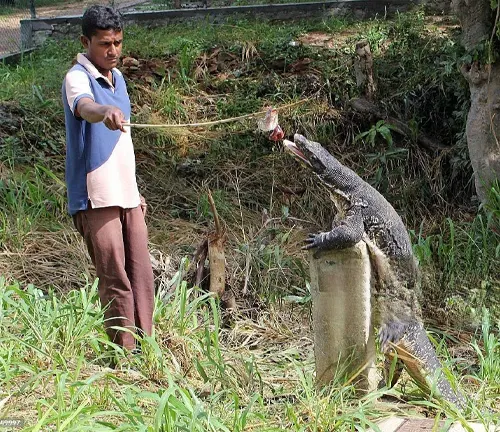

The interaction between Asian Water Monitors, and humans is a multifaceted aspect influenced by various factors, including habitat overlap, human activities, and cultural perceptions. While these monitors typically exhibit shy and elusive behavior, they may come into contact with humans in both positive and negative ways.
In some regions, Asian Water Monitors have adapted to human-modified environments, such as agricultural areas, urban areas, and human settlements. Here, they may scavenge for food scraps or take shelter in abandoned structures, leading to occasional sightings by humans.
However, conflicts between Asian Water Monitors and humans can arise, particularly in areas where their natural habitats overlap with human settlements or agricultural lands. Instances of Asian Water Monitors raiding poultry farms, fishing nets, or entering residential areas in search of food can lead to negative interactions and potential conflicts.
Despite their generally shy demeanor, Asian Water Monitors may exhibit defensive behavior if they feel threatened or cornered. This can result in aggression towards humans, particularly if they perceive humans as potential predators or threats to their territory.
Additionally, Asian Water Monitors may inadvertently pose risks to humans through their presence near water bodies frequented by people for recreational activities. While attacks on humans are rare, encounters with these large lizards can be intimidating and may lead to misunderstandings or fear among the public.
Conservation Status
The conservation status of the Asian Water Monitor, varies across its range, with populations facing different levels of threats and pressures. While some populations are relatively stable, others are experiencing declines due to various factors.
In general, the Asian Water Monitor is not considered globally threatened and is listed as “Least Concern” on the International Union for Conservation of Nature (IUCN) Red List. However, this designation does not imply that the species is immune to threats or that conservation efforts are unnecessary.
The conservation status of Asian Water Monitors can vary regionally, depending on factors such as habitat loss, pollution, illegal trade, and human-wildlife conflicts. In some areas, habitat destruction and degradation due to urbanization, agriculture, and infrastructure development pose significant threats to monitor populations.
Illegal trade for the exotic pet trade and traditional medicine markets also poses a threat to Asian Water Monitors, particularly in countries where enforcement of wildlife protection laws is lax. Additionally, human-wildlife conflicts may occur when monitors come into conflict with human activities or infrastructure.
Climate change is another emerging threat that could impact Asian Water Monitors and their habitats, affecting temperature and precipitation patterns, sea level rise, and habitat availability.
Conservation efforts aimed at protecting Asian Water Monitors and their habitats include habitat restoration, protected area management, enforcement of wildlife protection laws, community-based conservation initiatives, and public education and awareness campaigns.
Conservation Efforts
Several conservation efforts are underway to protect and conserve the Asian Water Monitor, and its habitats across its range. These initiatives aim to address the various threats facing monitor populations and promote their long-term survival in the wild.
Habitat restoration and protection play a crucial role in conservation efforts for Asian Water Monitors. Conservation organizations and government agencies work to restore degraded habitats, establish protected areas, and implement habitat management plans to ensure the availability of suitable habitats for monitor populations.
Enforcement of wildlife protection laws and regulations is essential for combating illegal trade and poaching of Asian Water Monitors. Strengthening law enforcement efforts, increasing penalties for wildlife crimes, and enhancing monitoring and surveillance mechanisms are vital for deterring illegal activities and protecting monitor populations.
Community-based conservation initiatives engage local communities in conservation activities and promote sustainable land use practices that benefit both humans and wildlife. These initiatives involve education and awareness programs, capacity-building initiatives, and livelihood alternatives to reduce human-wildlife conflicts and promote coexistence.
Research and monitoring efforts are essential for understanding the ecology, behavior, and population dynamics of Asian Water Monitors. Researchers conduct studies to assess population trends, habitat use, and threats facing monitor populations, providing valuable data for conservation planning and management.
Public education and awareness campaigns raise awareness about the importance of Asian Water Monitors and their habitats, highlighting the threats they face and promoting actions to conserve them. These campaigns target various stakeholders, including local communities, policymakers, and the general public, to foster support for conservation efforts.
International cooperation and collaboration are essential for addressing transboundary conservation issues and promoting coordinated conservation actions across the range of Asian Water Monitors. Collaboration between governments, conservation organizations, researchers, and local communities facilitates information sharing, capacity building, and the development of regional conservation strategies.
Different Species
Varanus salvator
Also known as the Common Water Monitor or the Asian Water Monitor, this species is the most widely distributed and commonly encountered among the Asian Water Monitors. It can be found across various countries in South and Southeast Asia, including India, Sri Lanka, Thailand, and Indonesia.
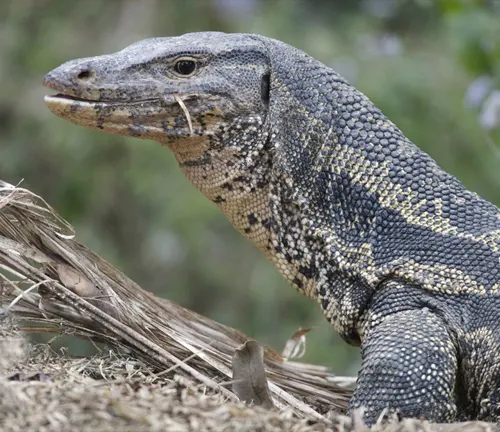
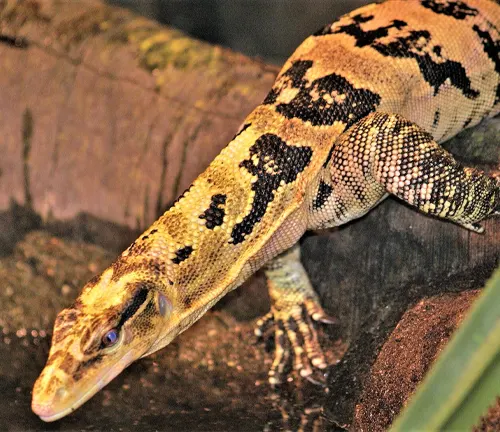
Varanus cumingi
Cuming’s Water Monitor, named after the English naturalist Hugh Cuming, is a species native to the Philippines. It is smaller in size compared to Varanus salvator and has a distinct color pattern.
Varanus marmoratus
The Marbled Water Monitor, also known as the Two-banded Monitor, is found in parts of Indonesia and Malaysia. It has a marbled pattern on its body, which distinguishes it from other species.


Varanus nuchalis
The Black-backed Water Monitor, native to the Philippines, is characterized by its black dorsal coloration. It inhabits forested areas and is less frequently encountered compared to other species.
Varanus caerulivirens
The Blue-tailed Water Monitor, found in the Philippines, is known for its striking blue tail. It inhabits forests and is primarily arboreal, often climbing trees to escape predators or search for food.
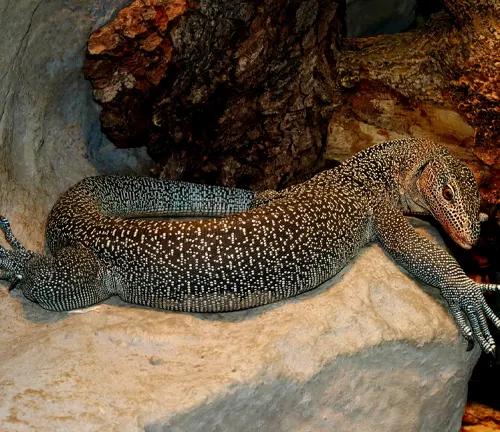
Frequently Asked Questions (FAQs)
- Are Asian water monitors dangerous to humans?
While they are large and powerful, Asian water monitors are generally shy and avoid confrontation with humans. However, they can defend themselves if threatened. - Can Asian water monitors be kept as pets?
Yes, they can be kept as pets, but it requires specialized care and a large enclosure due to their size. Additionally, owning one may be subject to legal restrictions in some areas. - What do Asian water monitors eat in captivity?
In captivity, Asian water monitors can be fed a diet consisting of rodents, fish, insects, and occasionally fruits and vegetables. It’s essential to provide a varied diet to ensure proper nutrition. - How big do Asian water monitors get?
Asian water monitors can grow to be over 6 feet in length and weigh more than 20 kilograms, making them one of the largest lizard species in the world. - Do Asian water monitors make good pets for beginners?
Due to their large size and specialized care requirements, Asian water monitors are not recommended as pets for beginners. They require experienced reptile keepers who can provide adequate care. - Do Asian water monitors require special heating and lighting in captivity?
Yes, Asian water monitors need a warm and humid environment with access to UVB lighting to support their health and well-being. Proper heating and lighting are crucial for their physiological processes. - How long do Asian water monitors live in captivity?
With proper care, Asian water monitors can live for over 10 years in captivity. However, their lifespan may vary depending on factors such as diet, habitat conditions, and genetic predisposition. - Are Asian water monitors legal to own as pets everywhere?
Regulations regarding the ownership of Asian water monitors vary by location. In some areas, they may be legal to own with proper permits, while in others, they may be prohibited due to concerns about invasive species or public safety. - Do Asian water monitors require a lot of space in captivity?
Yes, Asian water monitors need a large enclosure with ample space to move around and exhibit natural behaviors. A minimum enclosure size of at least 8 feet long by 4 feet wide by 6 feet tall is recommended for adult monitors. - Do Asian water monitors hibernate?
Asian water monitors do not undergo true hibernation but may become less active during cooler periods. In captivity, they may exhibit reduced activity levels if temperatures drop significantly. - Can Asian water monitors be housed together?
While Asian water monitors are generally solitary animals, they can sometimes be housed together in large enclosures if proper space and resources are provided. However, aggression and territorial behavior may still occur, so careful monitoring is essential. - Do Asian water monitors require veterinary care in captivity?
Yes, regular veterinary check-ups are essential for monitoring the health of Asian water monitors in captivity. They may require vaccinations, parasite control, and dental care to maintain their well-being.


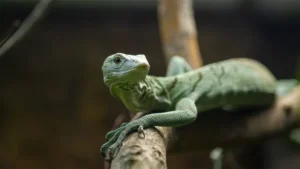
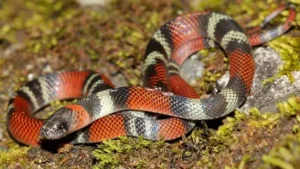

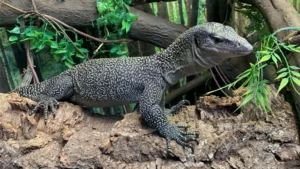
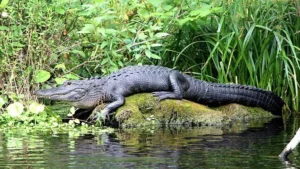
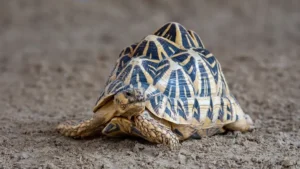
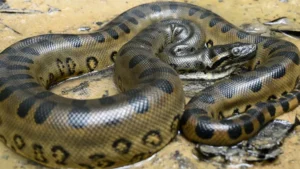



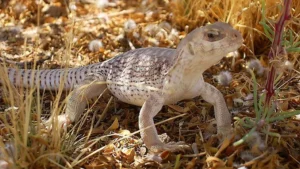

Leave your comment